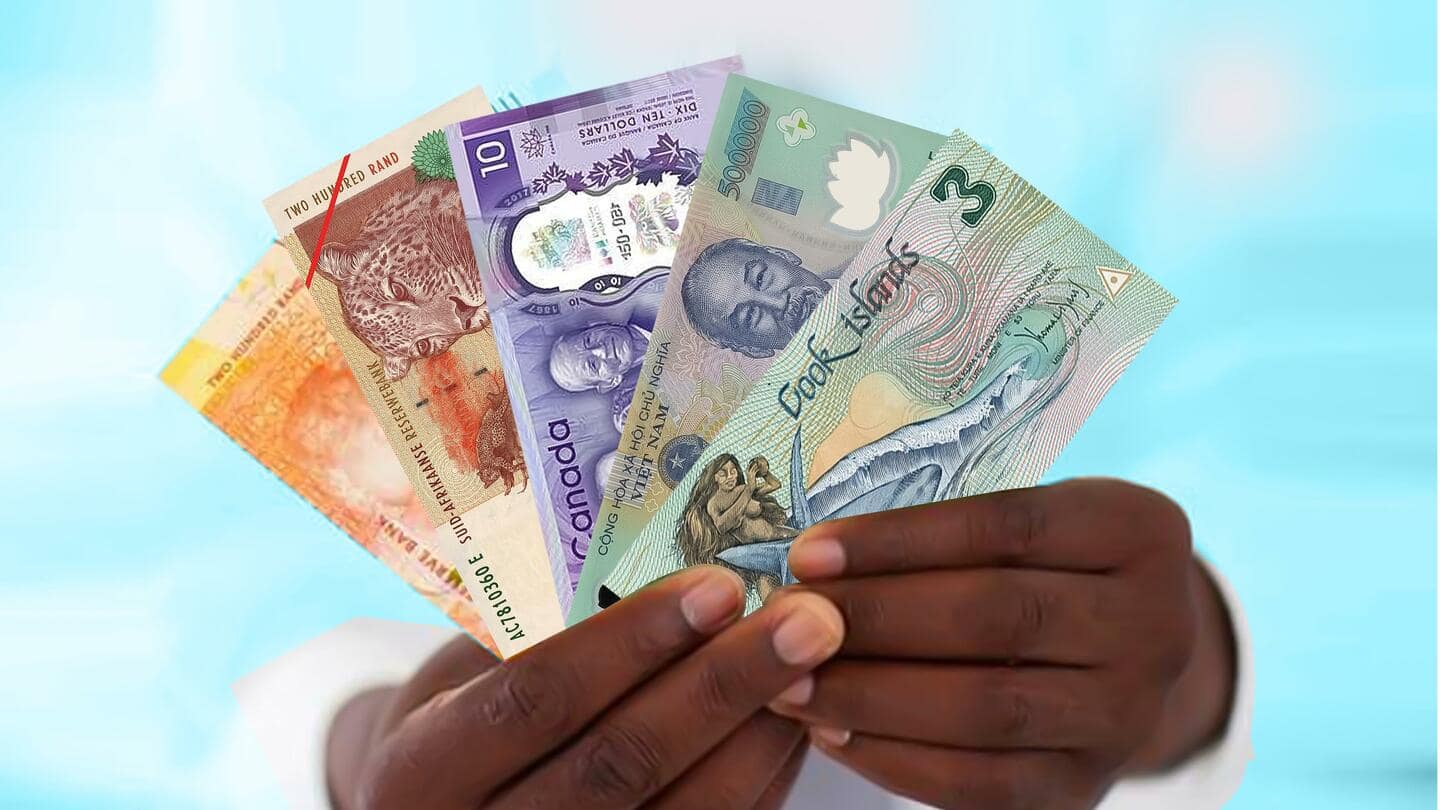
Did you know that the first official currency was minted in 600 BCE by King Alyattes of Lydia? The world of money is filled with quirky, fascinating facts that go beyond the coins and bills in your wallet. From the rise of paper money in Europe to the advent of virtual currencies like Bitcoin, the evolution of currency has shaped economies and societies in unexpected ways. U.S. currency, for instance, isn't made of paper but a blend of cotton and linen, making it more durable. Even the $1 bill has hidden security features like red and blue fibers. Dive into these 30 unusual facts about currencies and discover the intriguing stories behind the money we use every day.
Key Takeaways:
- Currency has a fascinating history, from the first official coins made of electrum to the rise of mobile payments and virtual currencies like Bitcoin.
- U.S. currency is unique, with hidden security features, star notes, and a composition of 75% cotton and 25% linen fibers. It's also interesting to note that the $1 bill's pyramid top is incomplete.
The Origins of Currency
Currency has a rich history, evolving from simple bartering systems to complex digital transactions. Let's explore some fascinating facts about the origins and unique features of money.
-
The First Official Currency
In 600 BCE, King Alyattes of Lydia minted the first official currency, the Lydian stater. Made from electrum, a mix of silver and gold, these coins were stamped with images to denote value. -
The Rise of Paper Money
Paper money revolutionized trade in Europe. Banks and the ruling classes began buying foreign currencies, creating the first currency market. This stability boosted trade but also led to currency wars, where nations manipulated each other's currency values for economic gain.
Modern Innovations in Currency
As technology advanced, so did the ways we use and think about money. From mobile payments to virtual currencies, the landscape of currency has dramatically shifted.
-
Mobile Payments
The 21st century saw the rise of mobile payments. Services like Apple Pay, Venmo, and PayPal became popular, especially in Asia and Europe, before spreading to North America. -
Virtual Currencies
Virtual currencies, like Bitcoin, emerged in 2009. Created by Satoshi Nakamoto, Bitcoin operates on a decentralized system, offering lower transaction fees compared to traditional online payment methods.
Unique Features of U.S. Currency
U.S. currency has several unique features that make it both durable and secure. Let's dive into some interesting aspects of American money.
-
The Composition of U.S. Currency
U.S. paper money isn't made of paper but a blend of 75% cotton and 25% linen fibers. This composition makes it more durable than regular paper. -
Hidden Security Features
The U.S. $1 bill contains hidden security features, including red and blue fibers woven into the paper. The printing on Federal Reserve $1 notes issued after 1963 is raised, making counterfeiting difficult. -
The Top of the Pyramid
On the back of the $1 bill, the pyramid's top is incomplete. This design signifies "strength and duration," according to Charles Thomson, secretary of the Continental Congress. -
Star Notes
If a mistake is noticed on a bill after printing, it's replaced with a new note featuring a star next to the serial number. These are known as "star notes."
Historical Tidbits
Currency has a rich history filled with interesting tidbits and unique practices. Here are some historical facts about money.
-
The $1 Bill's History
The $1 bill was the first to bear the slogan "In God We Trust," mandated by law in 1955. The public can buy uncut sheets of currency and even shredded currency as souvenirs. -
Defacement of Currency
Defacing a Federal Reserve Note with the intent to render it unfit for reissue is a crime. Offenders can face fines or imprisonment up to six months, or both. -
Production of U.S. Currency
The U.S. Bureau of Engraving and Printing produces 38 million notes daily, worth $541 million. These notes are made using 9.7 tons of ink daily.
Coins and Their Composition
Coins, like paper money, have unique features and compositions that make them interesting. Let's look at some facts about coins.
-
Coins and Their Composition
U.S. coins are made from cheaper metals like copper, zinc, and nickel. The average lifespan of a coin is 25 years, and Americans throw away around $62 million of coins annually. -
Copper in Pennies
The amount of copper in a penny has changed over the years. During WWII, pennies were made of steel to conserve copper for ammunition. Today, pennies are 2.5% copper and 97.5% zinc. -
Counterfeiting
The most counterfeited bill globally is the $20 bill. However, recent security measures have significantly reduced counterfeit occurrences.
Recycling and Reusing Currency
Damaged or old currency doesn't just disappear. There are unique methods for reusing and recycling money.
-
Reusing Damaged Currency
The U.S. Bureau of Engraving and Printing recycles damaged money. Shredded currency is composted, used in landfill projects, or even burned to generate electricity. -
Tracking Currency
Every U.S. bill has a unique serial number, helping trace its movement and usage.
Fun Facts and Trivia
Currency isn't just about economics; it's also filled with fun facts and trivia that make it even more interesting.
-
Metals in Coins
Most coins are made from metal alloys. The nickel 5-cent coin is actually 75% copper and only 25% nickel. -
The Dollar Sign
The dollar sign ($) comes from the Spanish pieces of eight, used in American colonies before the U.S. dollar was established. -
Lucky Bills
In some cultures, certain serial numbers or specific types of bills are considered lucky. Collectors often pay higher prices for notes with auspicious numbers. -
First Woman on U.S. Currency
Martha Washington was the first woman to appear on modern U.S. currency, featured on the $1 Silver Certificate in the late 1800s. -
Alexander Hamilton
Alexander Hamilton's portrait is on the front of the $10 bill. -
Benjamin Franklin
Benjamin Franklin is on the U.S. $100 bill, also known as the "Benjamin." -
Discontinued Bills
The $500 bill was discontinued and phased out of circulation in 1969. -
John F. Kennedy
President John F. Kennedy is depicted on the U.S. half-dollar coin. -
The Cost of Producing Coins
As of 2022, it costs about 1.5 cents to make a single penny in the United States. -
Unique Methods for Reusing Currency
The U.S. Bureau of Engraving and Printing employs unique methods to reuse damaged or shredded currency, including composting and burning it to generate electricity. -
Trained Dogs in Currency Detection
Trained dogs can detect the scent of money, helping customs officials catch smugglers attempting to move large sums of cash across borders. -
Serial Numbers on Currency
The U.S. tracks every bill it prints with a unique serial number, aiding in tracing the movement and usage of currency notes. -
Metals in the Nickel Coin
The nickel 5-cent coin is actually 75% copper and only 25% nickel. -
The Evolution of U.S. Currency
The modern era of the U.S. dollar began in 1913 with the Federal Reserve Act. This act established a new central bank and gave the Fed the authority to issue Federal Reserve Notes, now the dominant form of U.S. currency. The shift from a gold standard to fiat currency in 1971 further transformed the U.S. monetary system.
The Fascinating World of Currency
Currency has come a long way from the Lydian stater to Bitcoin. Each form of money, whether it's paper, coin, or digital, tells a unique story. From the durability of U.S. paper money made from cotton and linen to the rise of mobile payments, the evolution of currency reflects our changing world. Hidden security features, star notes, and the intriguing history of the $1 bill add layers of complexity. Even the composition of coins and the cost of producing them reveal economic insights. Understanding these unusual facts about currencies not only enhances our appreciation for the money we use daily but also offers a glimpse into the intricate systems that govern our financial transactions. So next time you hold a bill or coin, remember there's more to it than meets the eye.
Frequently Asked Questions
Was this page helpful?
Our commitment to delivering trustworthy and engaging content is at the heart of what we do. Each fact on our site is contributed by real users like you, bringing a wealth of diverse insights and information. To ensure the highest standards of accuracy and reliability, our dedicated editors meticulously review each submission. This process guarantees that the facts we share are not only fascinating but also credible. Trust in our commitment to quality and authenticity as you explore and learn with us.


